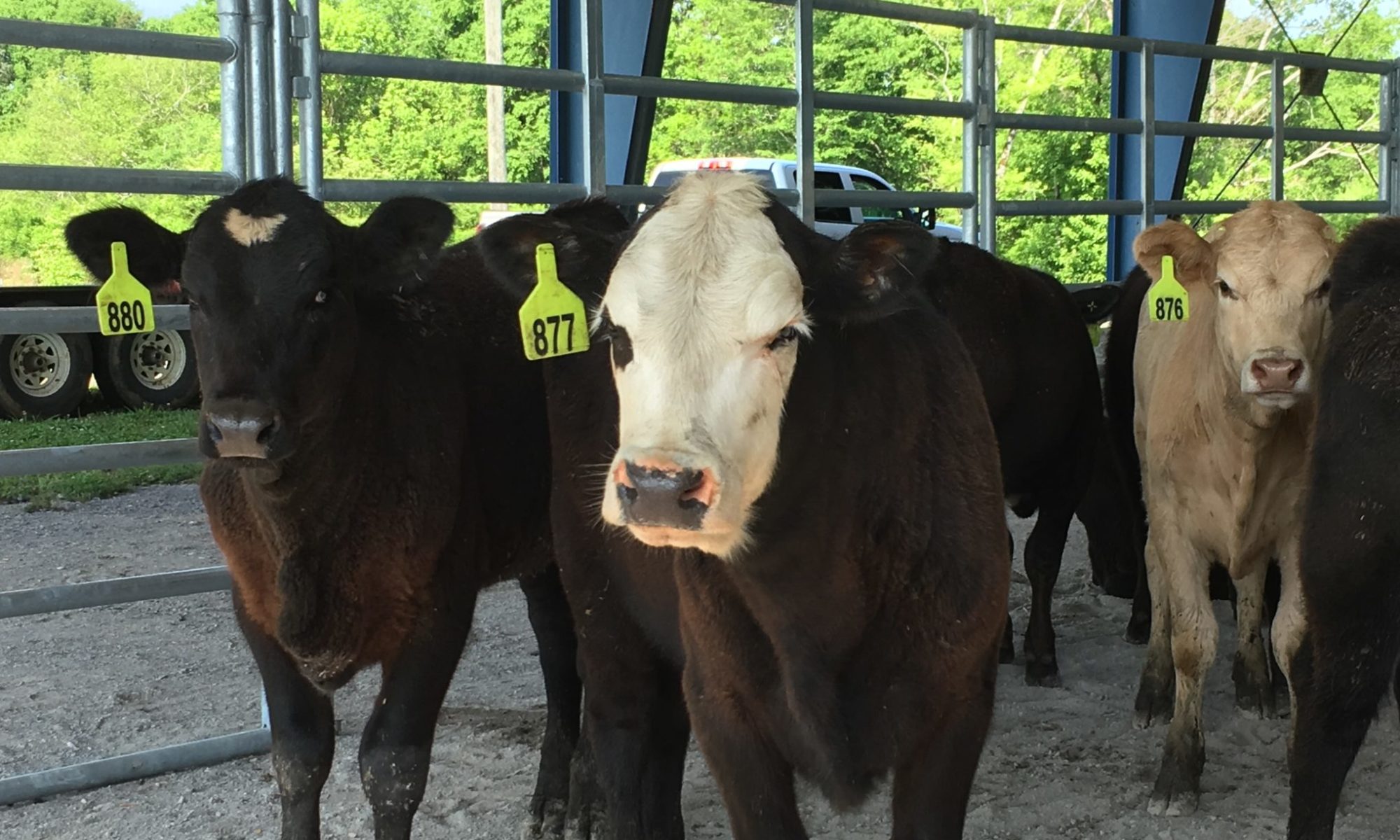

Dr. Andrew Griffith
Assistant Professor
Department of Agricultural and Resource Economics
P: 865-974-7480
The stocker cattle business can be extremely rewarding when a producer follows all of the rules and devotes his or her time to the cattle purchased. The stocker cattle business can be extremely devastating if the rules are not kept and the producer does not put in the time. What is this fool talking about? Give me a chance to explain, and I think it will all make sense in the end.
The rules of stocker cattle production: 1) buy them right, 2) keep them alive, 3) help them grow, and 4) sell them better than they were bought. Producers who can follow these four rules are champions of the cattle industry. Producers who find out they cannot follow these four rules generally do something else. However, to achieve these four rules, it takes significant time, effort, and often patience to be successful.
Buy them right: Many people will think this is just about the price, but there is much more than that. Some producers buy their own cattle while others will have someone else purchase their cattle. The key to purchasing cattle is finding the cattle with the characteristics that fit the stocker program. The ideal calf for many operations is a thin calf that is “hardened” and that can be upgraded. However, that may not be the case for every operation as some operations are better off taking in the top end cattle and growing them quickly to have a faster turnover of cattle.
Keep them alive: This can seem easy on some turns of cattle and then the next turn feels like the Grim Reaper is standing watch. Several things contribute to keeping cattle alive including a good nutrition and mineral program, vaccination protocol, and a keen eye for identifying sick cattle. Identifying sick cattle is where patience comes in. Cattle will communicate their sickness by not eating, dull and sunken eyes, lethargy, and/or a fever. The issue is when a person first enters the field, pasture, or pen the cattle are in, cattle attempt to hide these signs. This is when a person has to be patient and allow the animal to display one or more of the signs. After determining a calf is sick, the producer then has to diagnose what is causing these symptoms, which can be even more difficult. Proper diagnosis improves response to treatment.
Help them grow: There is no way to make them grow, but if the correct feed sources are available then the animals will grow to their genetic potential. The feed source generally depends on the time of year and the cost, but a higher plain of nutrition will often help calves to get started quicker after purchase and help them to continue growing near peak potential through the stocker and backgrounding phases. It is a balancing act to keep cattle growing at an acceptable rate and to manage cost of gain.
Sell them better than they were bought: This has two meanings. The first is the cattle should appear to be better cattle than when they were purchased. In other words, they should be in the right condition, healthy, and look like cattle that are ready to enter the feedlot. The second meaning is the actual sell of the cattle. Cattle should be packaged in such a way that buyers want the cattle and are willing to compete for the animals being offered for sale to achieve an acceptable price.
Anyone who is willing to be a servant to these four rules can be successful in the stocker business. However, sinning against just one rule on a turn of cattle will most likely result in disappointment. This disappointment comes in two forms: price and pocketbook.
Spring Outlook: The calf market has shown some strength at auction markets, but as of the time of this writing, there were still some profitable opportunities. The value of gain when buying a 550 pound steer in March or April and carrying him to 800 pounds and sold in August was $1.39 per pound. This is the value of gain that could be locked in using the futures market given the expected basis in Tennessee. Similar values of gain can be achieved for cattle being marketed from September through November. The one issue with this calculation is that the output price would have to be locked in at the time of purchase to achieve the value of gain. The failure to hedge and a decline in the market price would subsequently reduce the value of gain. The values may be different by the time anyone reads this, but some back of the feed sack math could go a long way.
